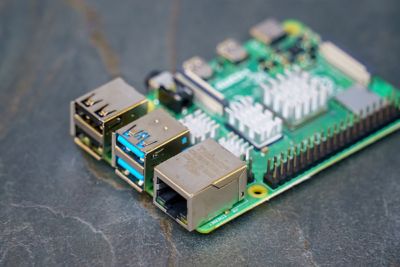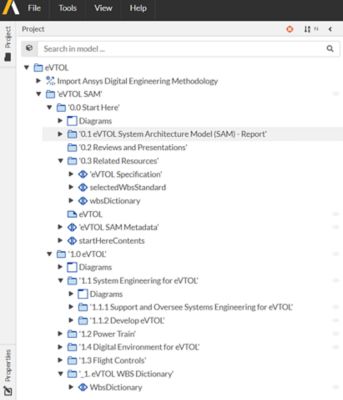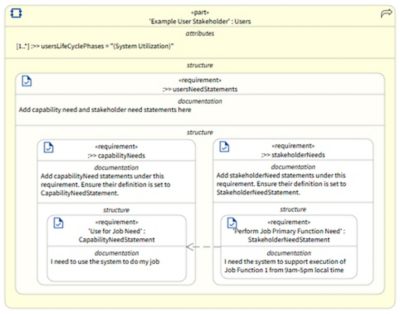-
-
Access Free Student Software
Ansys empowers the next generation of engineers
Students get free access to world-class simulation software.
-
Connect with Ansys Now!
Design your future
Connect with Ansys to explore how simulation can power your next breakthrough.
Countries & Regions
Free Trials
Products & Services
Learn
About
Back
Products & Services
Back
Learn
Ansys empowers the next generation of engineers
Students get free access to world-class simulation software.
Back
About
Design your future
Connect with Ansys to explore how simulation can power your next breakthrough.
Free Trials

A systems engineer developing a novel system-on-a-chip (SoC) design. A CFD engineer studying the airflow over the wing of a new electric airplane design. A safety engineer reviewing the design of a new pacemaker to confirm that it is compliant with existing regulations and requirements. What do all these people have in common?

A system on a chip
One connecting thread is the ever-present need to efficiently collaborate, produce accurate and compliant results, and remain agile. Historically, these goals have been hard to achieve — especially in our increasingly multidisciplinary and virtually connected world.
However, there is a new tool that can aid in addressing this challenge: a digital engineering methodology from Ansys that promises to change how you innovate, collaborate, and design the products revolutionizing the world. This methodology will help engineers from all industries and disciplines and will work for projects of all sizes to unlock the full benefits of digital engineering.
In short, this digital engineering methodology is a set of processes that engineers can use to run a systems engineering project. What makes this digital engineering methodology stand out is that it provides guidance via processes throughout the entire project — from helping to set up and manage a project to applying digital engineering best practices, analyzing systems, and linking with simulation software as well as safety and compliance guidelines. This digital engineering methodology will provide engineers with a comprehensive environment to build their system within while solving some of the common hardships they face today.
The Challenges Modern Engineers Face
The rapid pace of technological innovation holds true no matter what industry you’re in, with a seemingly constant stream of new breakthroughs and technologies.
Creating such advanced technologies often requires coordinating between large, multidisciplinary teams that are spread across the globe. These teams have the diverse backgrounds and expertise needed to excel, but at the same time, their strengths and knowledge may exist in silos. Teams may not follow the same processes, know what information other teams need, have an accurate overview of the whole project, or even use the same terminology.
This can make collaboration tricky and ineffective, with multiple teams often recreating models and simulations to fit their own needs instead of reusing existing resources.

Example of a work breakdown structure for an electric vertical take-off and landing craft

Modern engineering teams are increasingly distributed and multidisciplinary.
Compounding this issue is the need to move quickly and be agile in a competitive environment, all while striving for optimized designs that are safe and compliant. Making matters more challenging is the fact that these requirements are often in conflict with one another. For example, creating complicated designs quickly can lead to more issues, which requires more time to validate that they are safe and compliant. Another case is if different parts of a system are being handled by separate teams, each trying to reduce costs as much as possible. Although their work may function separately, the teams may discover that the overall system design is nonfunctional when put together at the end of the project, which would be a giant time and financial setback.
To avoid issues like these, Ansys has developed a new methodology.

Methodology for helping to realize digital engineering
What Is a Digital Engineering Methodology?
One way to view Ansys’ new digital engineering methodology is as a multidisciplinary cookbook, full of standardized and repeatable “recipes” that enhance efficiency, collaboration, accuracy, and more.
Let’s start by discussing the importance of this being a digital engineering methodology, which is much wider than a model-based systems engineering (MBSE) methodology. With a digital engineering methodology, all elements across disciplines and throughout design, simulation, analysis, and validation are brought together into one digital engineering methodology (i.e., our “cookbook”) that serves as an authoritative source of truth. The digital engineering methodology covers:
- Standardizing and sharing the system requirement definitions and system architecture definition
- Designing the construction of the system
- Optimizing the system design
- Integrating system components
- Validating the system
- Ensuring system compliance
Having all these processes and requirements within one cohesive digital engineering methodology increases efficiency by ensuring that all subject matter experts can work within one space and make informed decisions based on all available information.
Say you have 100 people working on an expansive vehicle systems engineering project. To avoid errors and setbacks, everyone can use the digital engineering methodology to express their designs in the same way, increasing efficiency across the board. Further, they can do this while doing exactly the amount of modeling they need, without creating extra models just for one element of the design and development process.
Whenever needed, the methodology can also collect all this information and automatically produce a document with a description of everything available. This saves time because the document is developed instead of written. Even better, the information in the document is extremely precise, as it is generated directly from the model being worked on.
We’ll go into more depth into other advantages of the digital engineering methodology below.
Fostering Collaboration
In addition to working all in one space, the digital engineering methodology also ensures that everyone can better communicate in an organized fashion to reach their goals.
One way it does this is via a standardized set of “recipes” that engineers of all disciplines can refer to. These include a set roadmap for the digital engineering project, a template library, and work instructions for those templates. Of these, the roadmap gives context and guidance on how to run a project, including the first step when running a project, which is creating a system architecture.
All the elements within the digital engineering methodology are made to be adapted to whatever the individual user intends to achieve. For instance, engineers can copy the templates in the pre-assembled template library into their project. They can then customize them according to the included work instructions to fit their own uses. With templates, two engineers from different fields can better understand one another’s work.
A few examples of the templates included in the digital engineering methodology are:
- A management template describing how to organize the project via a work breakdown structure. This corresponds to packages (i.e., individual tasks with inputs and outputs) within the system model.
- A template for defining a glossary of common terms used in that project. These definitions form a common language and understanding between everyone working on the project.
The digital engineering methodology aims to have templates for every step of the project, with many already developed and more on the way.
Ensuring Compliance, Standardization, and Accuracy
Being compliant throughout all steps of your project is important for all engineering disciplines. With this in mind, we intentionally designed the digital engineering methodology based on existing standards and processes, such as ISO/IEC/IEEE 15288:2015 and the U.S. Department of Defense (DoD) standards in digital engineering. The digital engineering methodology is also aligned with industry-specific standards to create a useful general resource across disciplines. Ingraining these standards and processes into the digital engineering methodology ensures that best practices and standards are in the same place for all team members to use when creating the best design possible.
Of course, you cannot ensure compliance and standardization without accurate results. That’s why this digital engineering methodology also integrates with all Ansys products to provide accurate, comprehensive analyses, no matter your field.
Remaining Agile
Agile development isn’t just for software development anymore. Today, engineers are approaching system engineering from an agile perspective, too. As such, our digital engineering methodology was created with a focus on remaining agile. This means that while engineers follow the existing organization while working, in parallel, the methodology can be modified and improved upon to include new elements, such as a committee approval template. This template becomes available to everyone as soon as it is completed, which maintains an easy-to-follow yet agile workflow for everyone.

Model pattern to identify stakeholders and their needs
What’s the Next Course?
The digital engineering methodology may very well be a necessary tool for the future of digital engineering. To successfully maintain a project from inception to deployment by bringing all the pieces together, this digital engineering methodology will be an essential tool in any engineer’s belt.
Learn more about this new digital engineering methodology.
The Advantage Blog
The Ansys Advantage blog, featuring contributions from Ansys and other technology experts, keeps you updated on how Ansys simulation is powering innovation that drives human advancement.




